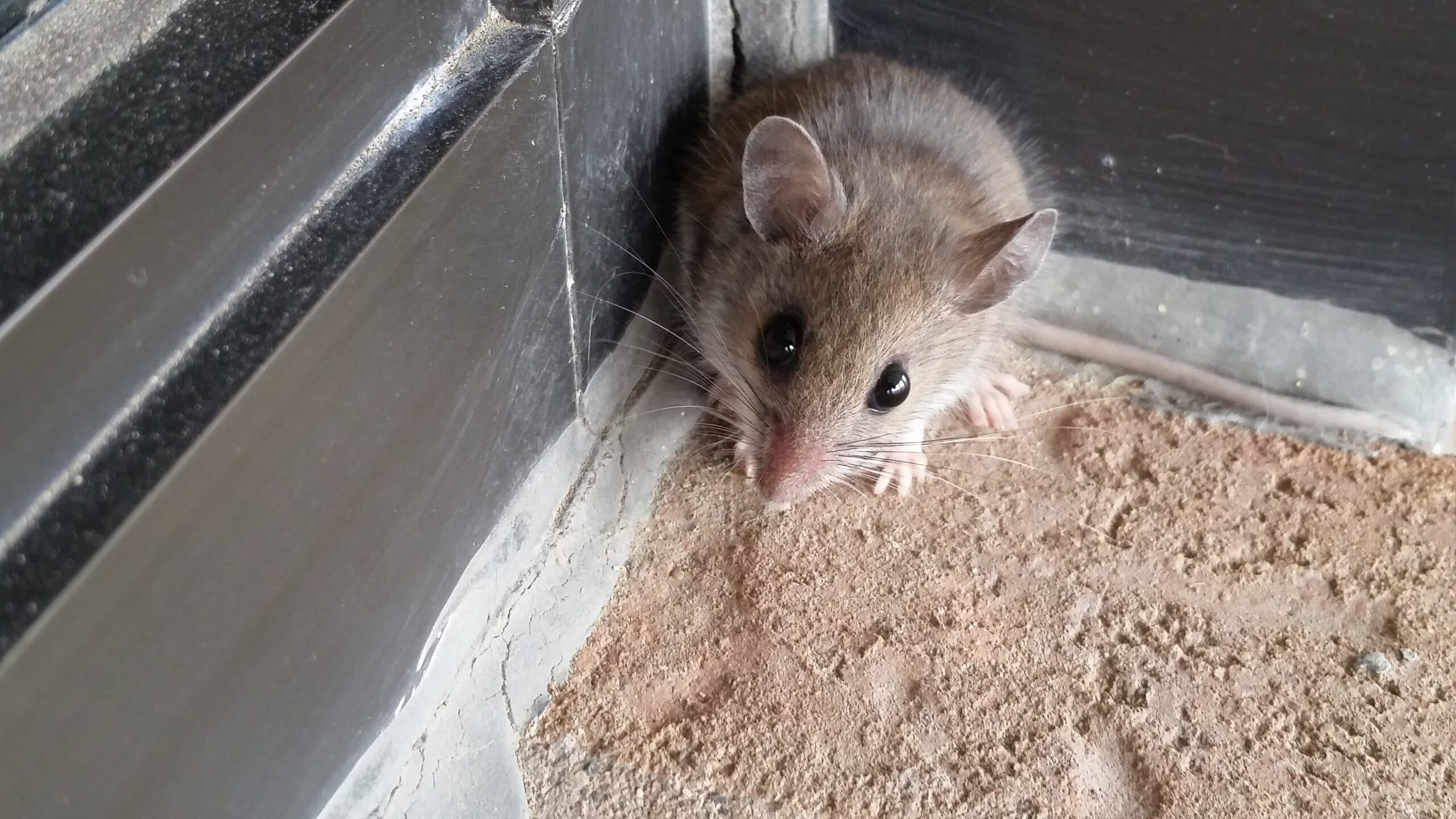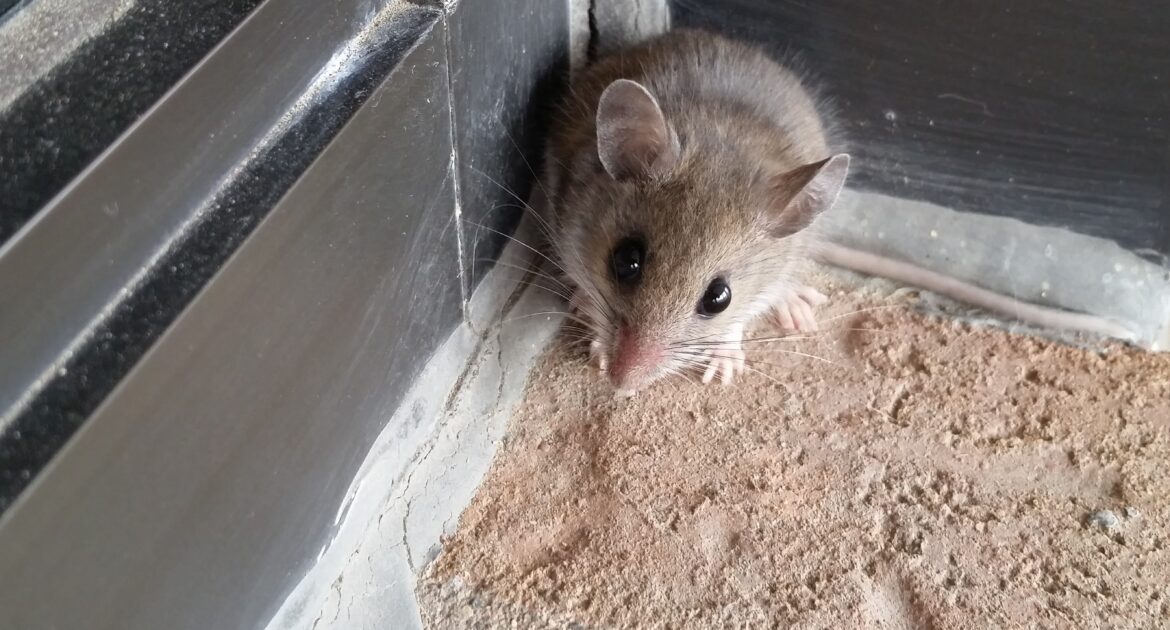Mice might look small and harmless but don’t underestimate their ability to turn your cozy home into their playground. Thanks to their tiny size and astonishing flexibility, these little creatures can squeeze into spaces as narrow as a dime. And once they’re in, they don’t waste any time making themselves comfortable, causing all kinds of trouble—from chewing wires to spreading contaminants.
If you’re wondering how do mice get in your house? Well, the answer may surprise you. While some entry points make sense, others are easy to overlook, giving mice a quiet pass into your living space.
Keep reading to uncover seven surprising entry points mice use to invade your home. Knowing where to look could save you from a bad mouse infestation and all the dangers it brings.
- Gaps Around Utility Lines
Think about where water pipes, electrical cables, or dryer vents enter your home. Are those openings perfectly sealed? Often, they’re not. Even the tiniest gap around utility lines can serve as an open invitation to mice.
Utility entry points are commonly overlooked because they’re out of sight—usually hidden in basements, behind furniture, or under cabinets. But mice are excellent at finding these spots, squeezing through tiny spaces to get inside. Sealing these gaps is one of the easiest but most effective ways to block their entry. Use materials like silicone caulk or steel wool to make these areas mouse-proof.
- Cracks in the Foundation
Your home’s foundation is meant to be solid and sturdy, but even the best-built foundation can develop cracks over time. These cracks, whether caused by natural wear or changing temperatures, can be just wide enough for mice to sneak through.
You might dismiss a small crack as innocent, but here’s the thing—mice are persistent. They can wiggle through the narrowest of spaces and create a pathway straight into your home. Regularly inspect your foundation and use materials like concrete patches or foam sealants to close any cracks before they widen.
- Dryer Vents
Your dryer vent might as well be a homing beacon for mice, especially as the weather gets colder. The combination of warm air being vented out and a loosely sealed flap creates a perfect entryway.
An improperly sealed dryer vent not only attracts mice but also gives them direct access to your walls and laundry room. To prevent this, install a vent cover that is specifically designed to keep rodents out. Make sure it’s securely fitted, so no sneaky guests can wedge their way inside.
- Gaps in Rooflines and Eaves
Think mice can’t climb? Think again. These determined creatures are excellent climbers, and they’ll use your roofline and eaves to find their way into your attic or upper levels. Small gaps where rooflines meet or where eaves overhang are tempting entry points for mice.
These spots are often ignored because people don’t think of mice as climbers. But ignoring them could lead to an infestation in your attic—a nightmare to deal with. Inspect your roofline and eaves regularly, and close gaps using metal mesh or exterior-grade sealant to keep things secure.
- Openings Under Garage Doors
Garages are another favourite entry point for mice. Poorly sealed garage doors leave just enough space for them to crawl underneath. Once inside the garage, they’ll scope out opportunities to get into the rest of your home.
Your garage can act as a staging area for an invasion. To solve this, install a weather-sealed door sweep on the bottom of your garage door. It not only blocks mice but also helps keep out dust and cold air—an extra win for you.
- Holes in Exterior Walls Around Fixtures
Outdoor faucets, air-conditioning units, or even cable and internet installations often leave small gaps or holes in your home’s exterior walls. These are easy oversights but major opportunities for mice looking to sneak in unnoticed.
These areas are often hidden by landscaping or outdoor equipment, so they’re easy to miss during routine checks. Seal any holes using expandable foam or caulk, and use metal mesh for larger openings to create an effective barrier.
- Damaged Window Screens or Basement Windows
Window screens are meant to keep bugs out, but if they’re ripped or poorly installed, they could become yet another entry point for mice. Basement windows, in particular, are vulnerable because they’re closer to ground level and often overlooked.
Regularly inspect your window screens and basement windows for signs of wear and tear. Replace damaged screens and add weather stripping around windows for added protection. For basement windows, consider installing window well covers to block access entirely.
The Risks of Having Mice Invade Your Home
Now that we’ve discussed the entry points, it’s important to understand the dangers of a mouse infestation. These animals don’t just eat your food and scurry around—they can bring serious risks to your household.
- Health Hazards: Mice can spread bacteria, viruses, and diseases—including hantavirus—through their droppings, urine, and saliva. These contaminants can put your family’s health at risk.
- Structural Damage: Mice love to chew. Electrical wires, insulation, and even drywall are all on the menu, leading to costly repairs and potential fire hazards.
- Rapid Reproduction: A single mouse can turn into dozens in just a matter of months. If you ignore the problem today, you’ll likely face an infestation that’s even harder to control down the line.
Warning Signs of a Mouse Problem
What attracts mice to your home? As a responsible homeowner, it’s crucial to be vigilant for early warning signs of an infestation. Detecting the problem early can help you prevent more significant issues and save you time, money, and frustration down the line. Keep an eye out for these signs:
- Tiny Droppings: Look for small, pellet-like droppings, often found in corners or near food storage areas.
- Scratching or Scurrying Noises: Listen for unusual sounds like scratching or scurrying in walls, ceilings, or behind appliances. These sounds may indicate mouse activity.
- Chewed Wires, Furniture, or Food Packaging: Check for signs of damage, such as chewed electrical wires, furniture, or gnawed food packaging. Mice have a strong urge to chew and can cause costly structural damage.
- Nests Made from Shredded Material: Pay attention to nests made from shredded paper, fabric, or insulation material. Mice often create cozy nests to rear their young.
- Grease Marks or Rubbing Stains: Keep an eye out for grease marks or rubbing stains along walls, baseboards, or furniture. Mice leave these marks as they navigate through narrow entry points.
- Unusual Pet Behaviour: If your pet suddenly becomes fixated on certain areas, such as corners or behind appliances, it could be a sign that they have detected the presence of mice.
- A Strong, Musty Odor: An unpleasant, musky smell in your home can be an indication of a mouse infestation. It’s caused by their urine, droppings, and nesting materials.
Remember, early detection is vital for controlling a potential mouse problem. By being observant and taking action at the first signs of an infestation, you can effectively address the issue and protect your home from further damage. Stay proactive and keep your home mouse-free!
Protect Your Home with Professional Help
Identifying and addressing these hidden entry points is your first line of defence against signs of a bad mouse infestation. However, sealing up every potential entryway and dealing with existing problems can be a daunting task. That’s where we come in.
At Skedaddle Humane Wildlife Control in Ajax, we specialize in humane, effective solutions to keep your home rodent-free. Our experts use advanced techniques, such as one-way doors, to safely remove mice without harm and ensure they can’t make a return visit.
Don’t wait for a small problem to become a significant issue. Contact us for a professional inspection and sealing service—or request a quote today! Take the first step toward a safer, healthier home.




